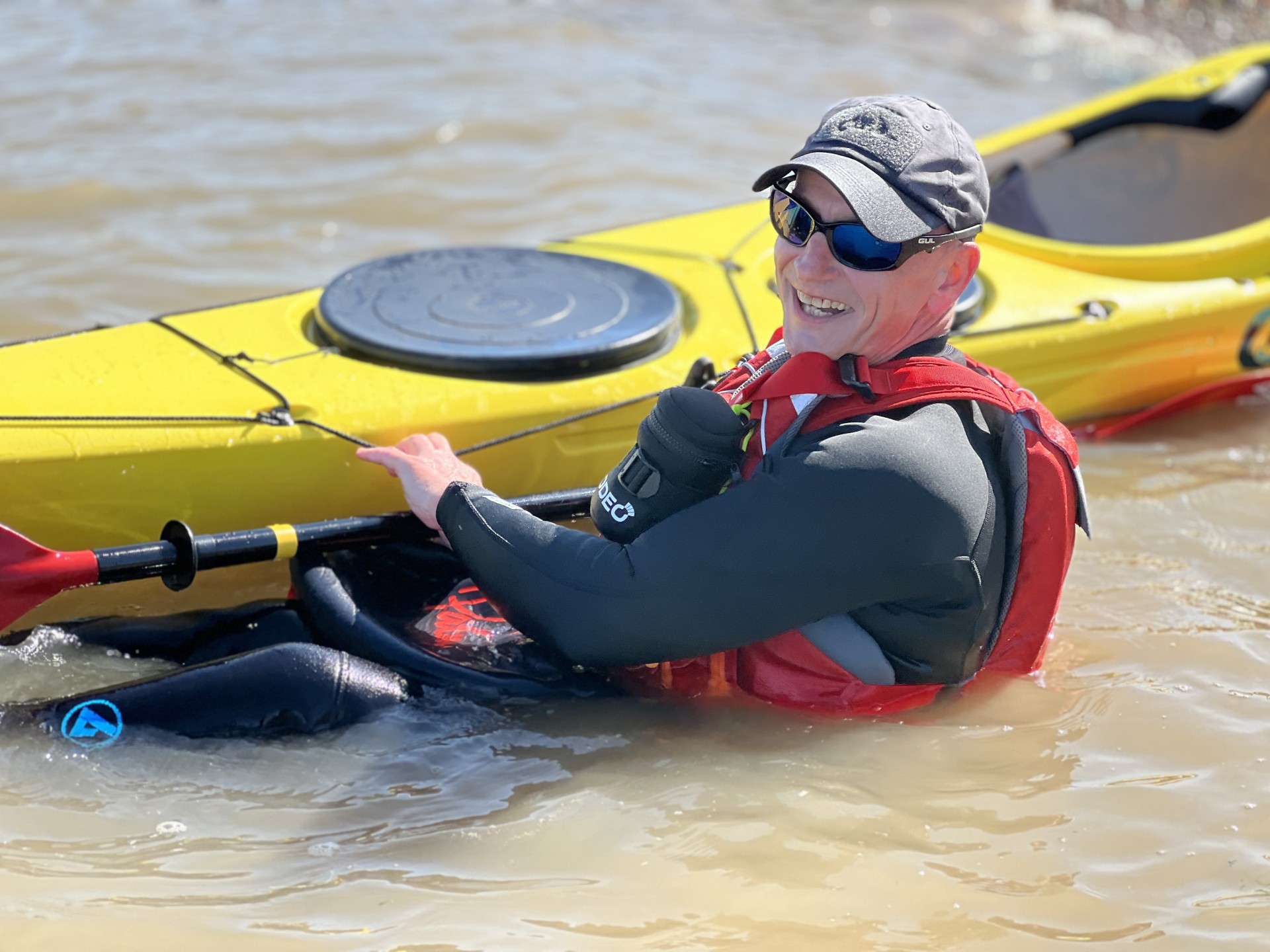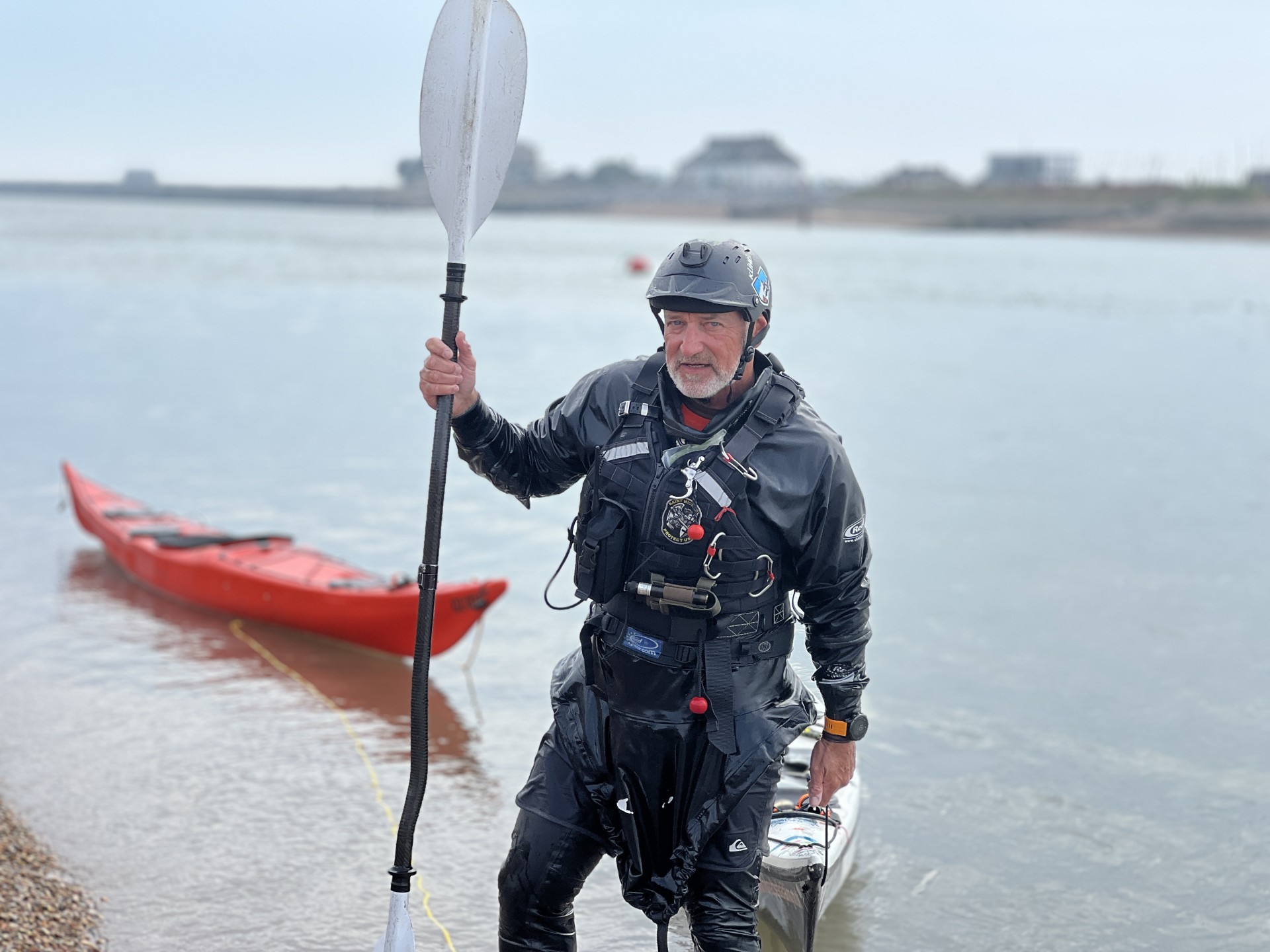
Reality Check!
Can’t get back into your kayak after a capsize? You had better learn to all else it’s overs for you chum! By nature, sea kayakers paddle in deep (can’t touch the bottom), tidal waters & as a consequence, there will be the odd capsize, particularly if you like to play & practice your skills in moving water. So what happens if you’re unable to re-enter your kayak?
NOMAD Sea Kayaking recommends paddling with at least two other competent paddlers but we understand that in reality, some paddle on their own. And if you come out of your boat you have only two options;
1. Get back in (fast).
2. Call for assistance & this means a Mayday resulting in a full rescue by M.C.A. (Marine Coastguard Agency) or R.N.L.I. volunteers!
The Possible Results:
1. An embarrassing rescue with resulting (& deserved) negative social media coverage.
2. A good telling-off by the authorities.
3. An expensive funeral for your family.
None of the above are pleasant, nor necessary if you’ve been trained! Yes, trained! You know, go on a course & actually learn how not to kill yourself!
The focus here is twofold;
1. Understand your personal limitations (if any) & that of your equipment.
2. Learn a solid Assisted Recovery and a Self-Recovery such as the Back Deck Scramble.
A good course like the Introduction to Sea Kayaking Level 1 or the very focused Recoveries of Kayakers course will identify any self-limiting factors such as overweight, body shape (bellies), fitness or fears (deep water, drowning et cetera). It’ll also show up failings in your equipment such as kayaks lacking deck lines & watertight bulkheads, over engineered seats that fail & general crappy gear that you just don’t need. Once past any fitness, weight & mental limitations, the recoveries you’ll need are straight forward;
1. Assisted Recovery: The bombproof ability to reliably re-enter your paddle buddy into their kayak in rough seas & to reverse the recovery i.e. your buddy recovers you back in to your kayak.
2. Self Recovery: The bombproof ability to reliably re-enter yourself into your kayak, without outside assistance.
In addition to the two recoveries listed above, completing a Navigation; Trip Planning for Sea Kayakers course will mitigate most if not all of the risk by ensuring you understand how tide & wind interact, allowing you to make informed decisions to paddle (or not) in the forecast conditions in the first place.
With these basic skills under your belt, you’ll be able to safely negotiate most coastal waters & come home every time. Later, you can add a Learn to Eskimo roll course which will make you as safe as possible. Just an added tool in your safety tool box. Of course, all of this training requires regular practice on your part, maintaining a basic level of fitness (physical & mental) as well as pressure testing your recovery skills.
There’s nothing like the potential of drowning, wet, alone & cold, to focus your mind. So let’s get to it!

Since surfing with the pros as a kid in Durban South Africa on my hollow 12ft barge & getting absolutely trashed, I was hooked on sea paddling. Over a period of forty-two years I’ve surfed, white watered & sea kayaked in locations around the world. I've guided as a full-time professional for the past twenty one years & my journey continues.